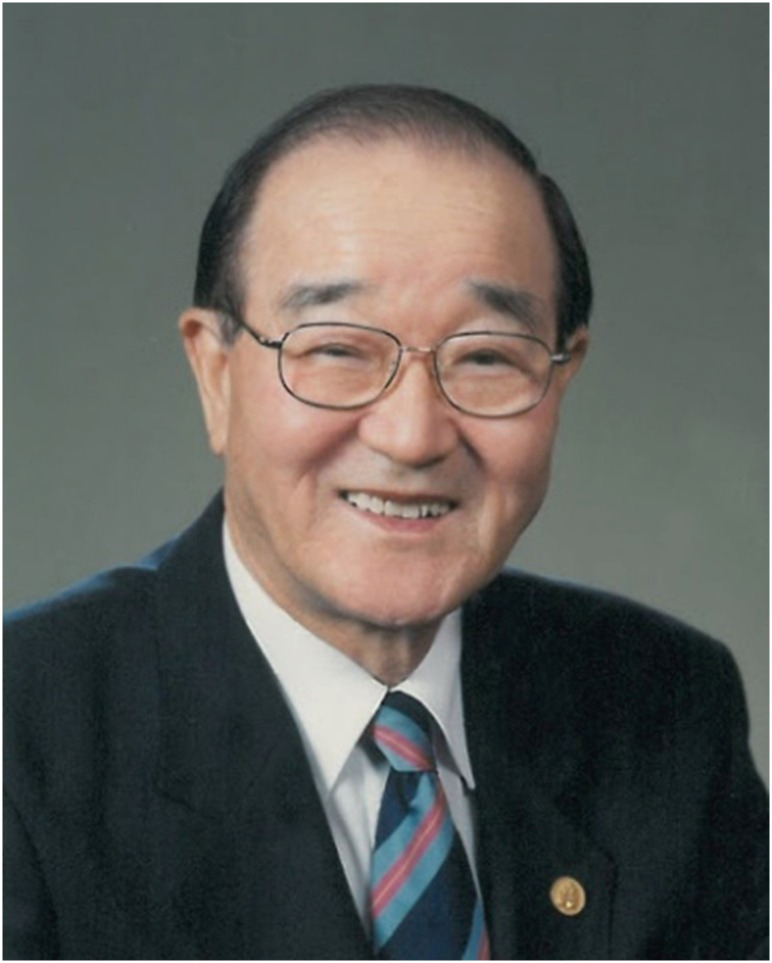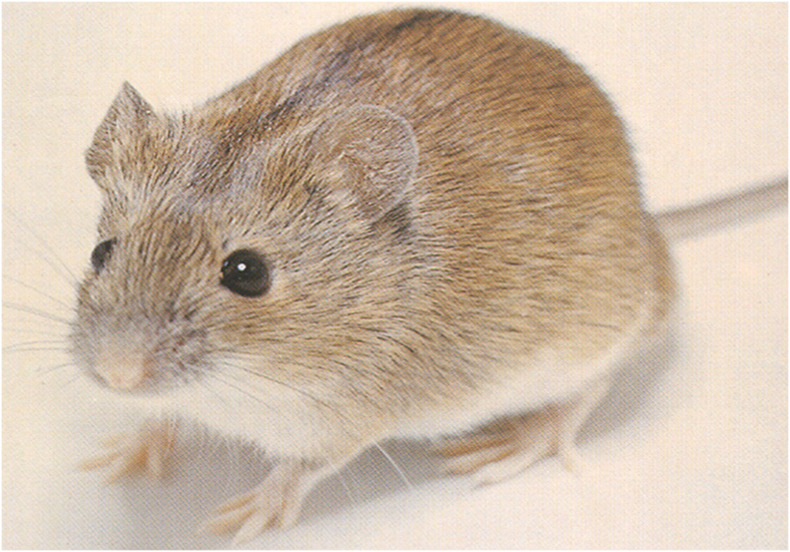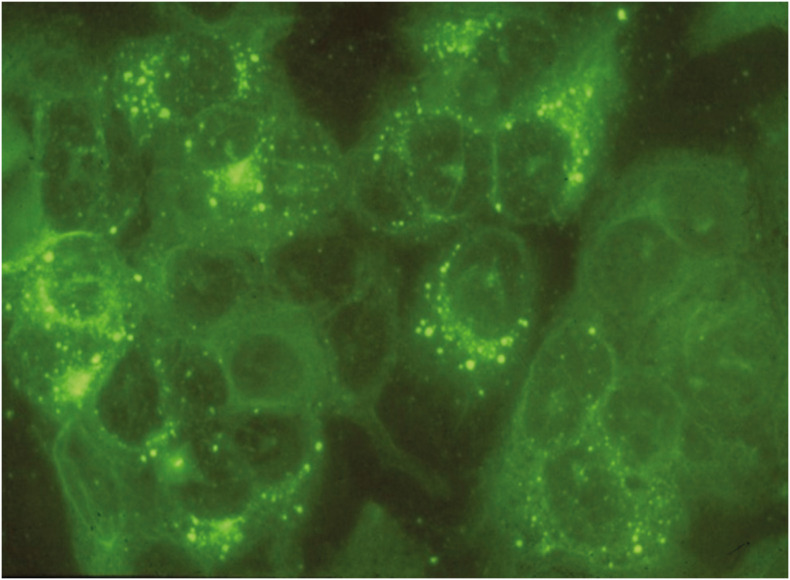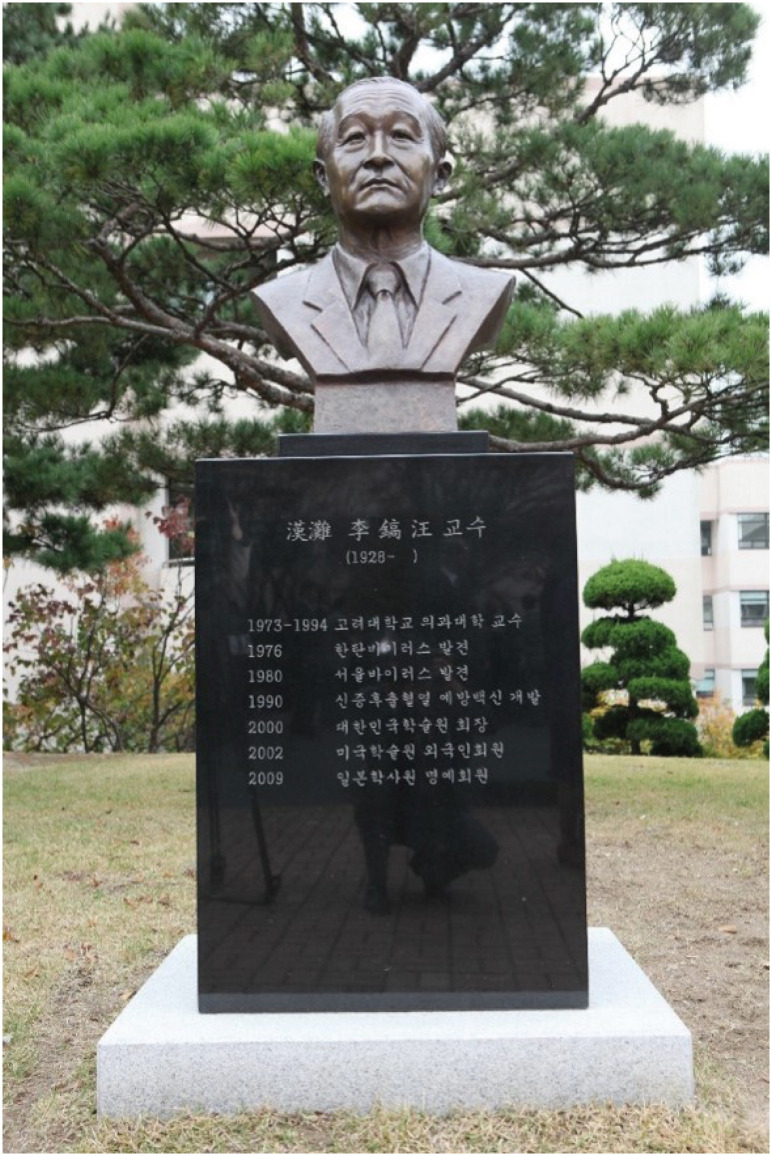Professor Ho Wang Lee was born on October 26, 1928, at Heunggyeong-ri, Sinheung-myeon, Sinheung-gun, Hamgyeongnam-do, Korea (Fig. 1). He graduated from the School of Medicine, Seoul National University in 1954 and received his master’s and doctoral degrees in medicine from the University of Minnesota, Minneapolis, MN, USA in 1959. During graduate school, he studied the cultivation, pathogenesis, and vaccine development of Japanese encephalitis virus.
His major founding was the identification of an etiological agent of hemorrhagic fever with renal syndrome (HFRS), referred to as Korean hemorrhagic fever, which was first recognized in 1951 in United Nation forces deployed to the Republic of Korea during the Korean War.1 By war’s end, there were more than 3,000 HFRS cases with an initial mortality of 14.6%. In 1976, Professor Lee and his research team discovered an antigen in the lung tissues of Apodemus agrarius captured in Songnae-dong, Dongducheon-si in Gyeonggi-do (Fig. 2). Using an indirect immunofluorescence assay, the antigen was found to specifically react to serum samples taken from patients with HFRS during the recovery period (Fig. 3). The team named it the Korea antigen, went on to isolate it from blood samples of hemorrhagic fever patients in 1978 and successfully proliferated the virus in A549 cells.23 In 1980, this novel virus was named Hantaan virus (HTNV) after the Hantaan river. With the development of a serologic diagnostic technique using HTNV as an antigen, it has been confirmed that HTNV or similar viruses are responsible for HFRS occurring in Korea, the hemorrhagic nephrosonephritis occurring in Russia, epidemic hemorrhagic fever in China and Japan, and nephropathia epidemica in Scandinavia.
In 1980, he identified Seoul virus (SEOV) as an etiological agent of urban HFRS.4 There was a suspicious case that a security guard, at an apartment in the Mapo-gu of Seoul, became ill after catching a house rat. This patient showed high titer of HTNV antibodies and clinical symptoms of HFRS including fever, headache, abdominal pain, nausea, and protein in urine. He also showed petechiae on the upper body, and his eyes were severely bloodshot. Based on the epidemiological survey, Professor Lee continued to investigate the serological test for HTNV from the house rats collected in the urban area. One day, his research team found the positivity of HTNV antibodies from a rat captured in the supermarket in the basement of the apartment where the HFRS patient was observed. Intriguingly, few of them were harbored by a new viral antigen in the lungs. Finally, his research team was successful to isolate the new genotype of virus, named as SEOV. The natural host of SEOV was house rats (Rattus norvegicus and R. rattus) which lived and flourished around world by cars, trains, trades, ships, and even planes. The discovery of SEOV, a worldwide etiological agent of urban HFRS, significantly contributed to diagnose and treat HFRS for physicians.
Professor Lee first developed the vaccine for HFRS. Starting the development of the vaccine in 1981, he and the research team serially passed through HTNV in the tissue culture cells of an animal without susceptibility over hundred times to attenuate the pathogenicity. Sequentially, his research team succeeded in serially passing it through a suckling mouse in 1985. After that, he performed a joint study with the GC Biopharma and finally succeeded in mass-producing of the inactivated vaccine using formalin, which was a perfectly safe manufacture method recommended by World Health Organization (WHO). The first paper on the vaccine was published in October 1988.5 In late December 1988, the Korean media announced that the world’s first HFRS vaccine had been developed in Korea. In 1990, this vaccine was licensed by the Korean government and given the name Hantavax. The history of Hantavax, as the first vaccine of HFRS, provides an amazing story for the development of a new preventive drug and contribution to the medical history as well.
Professor Lee contributed to the development of a simple, fast, and cheap diagnostic kit for HFRS. In 1978, He had strongly collaborated with Dr. Tetsuo Tomiyama, a professor of clinical pathology at Tokyo University Hospital in Tokyo, Japan. Their co-work tried to develop the diagnostic of HFRS by performing the latex agglutination, passive hemagglutination, and silicon high density particle. However, these methodologies failed or were less effective. However, after 11 years, their joint research had succeeded in developing a new diagnostic method by using the high-density particle agglutination. Drs. Lee and Tomiyama announced the result of their research on the new HFRS diagnostic method in 1989 and published this result in 1990.6 It was followed by the contract with the GC Biopharma to manufacture and distribute this new diagnostic kit. It was the first case in the world to produce a simple and economic diagnostic kit for hantavirus infection. Due to the experience, Dr. Lee emphasized the beauty of international collaboration to make advancements, solve unmet questions, and accomplish scientific achievements in the field of medical science.
Professor Lee led to communicate and collaborate with a variety of biomedical scientists and professors around the world. He gave significant efforts to constitute the International Society of Hantaviruses (ISH) and was elected as the first president of ISH. The International Conference of Hantaviruses (ICH) was first held in Seoul, Republic of Korea, in 1989. The 12th ICH will be held in Korea University College of Medicine, Seoul, in 2023.
In 1982, Professor Lee served as the director of the WHO Collaborating Center for Virus Reference and Research (HFRS), and in 2000, he served as the president of the National Academy of Sciences, Seoul, Korea. In 2002, he was the first Korean to be selected as a foreign member of the National Academy of Sciences (NAS), Washington, D.C., USA and as an honorary member of the Japan Academy, Tokyo, Japan in 2009. This is an unprecedented achievement as the first member of the Academy of Sciences in Korea, the USA, and Japan. Annually, the American Society of Virology (ASV) selects the Ho Wang Lee Lecturer since the 15th ASV Meeting in 1996.
Professor Lee sincerely gave lessons and inspired the younger generation of Koreans and medical scientists as follows: ‘to a scientist, coincidence is a gift that comes from enthusiasm and efforts’ and ‘be brave to challenge and investigate an unsolved question in the world.’
Taken together, Professor Lee first discovered the etiological agent of a hemorrhagic fever disease and named it HTNV. In 2019, this virus became a new family of Hantaviridae and the order of Bunyavirales, which was amended and accepted by the International Committee on Taxonomy of Viruses.78 He contributed to humankind’s escape from the fear of this mysterious disease by developing all of the processes from the identification of the causing virus and the propagation route of the epidemic hemorrhagic fever to its diagnostic method and preventive vaccine. He was a great person who has left a big footprint all over the world as a doctor, scientist, and educator (Fig. 4). We once again pray for the well-being and rest of the deceased.




 PDF
PDF Citation
Citation Print
Print







 XML Download
XML Download